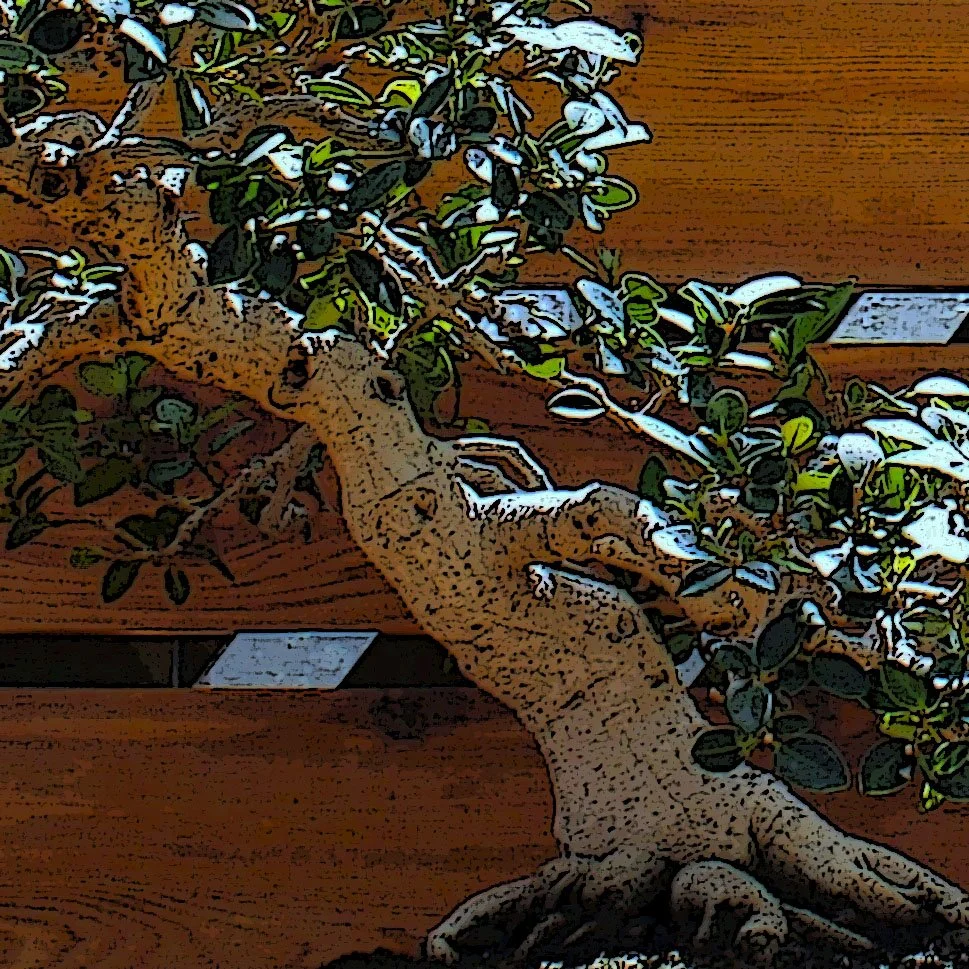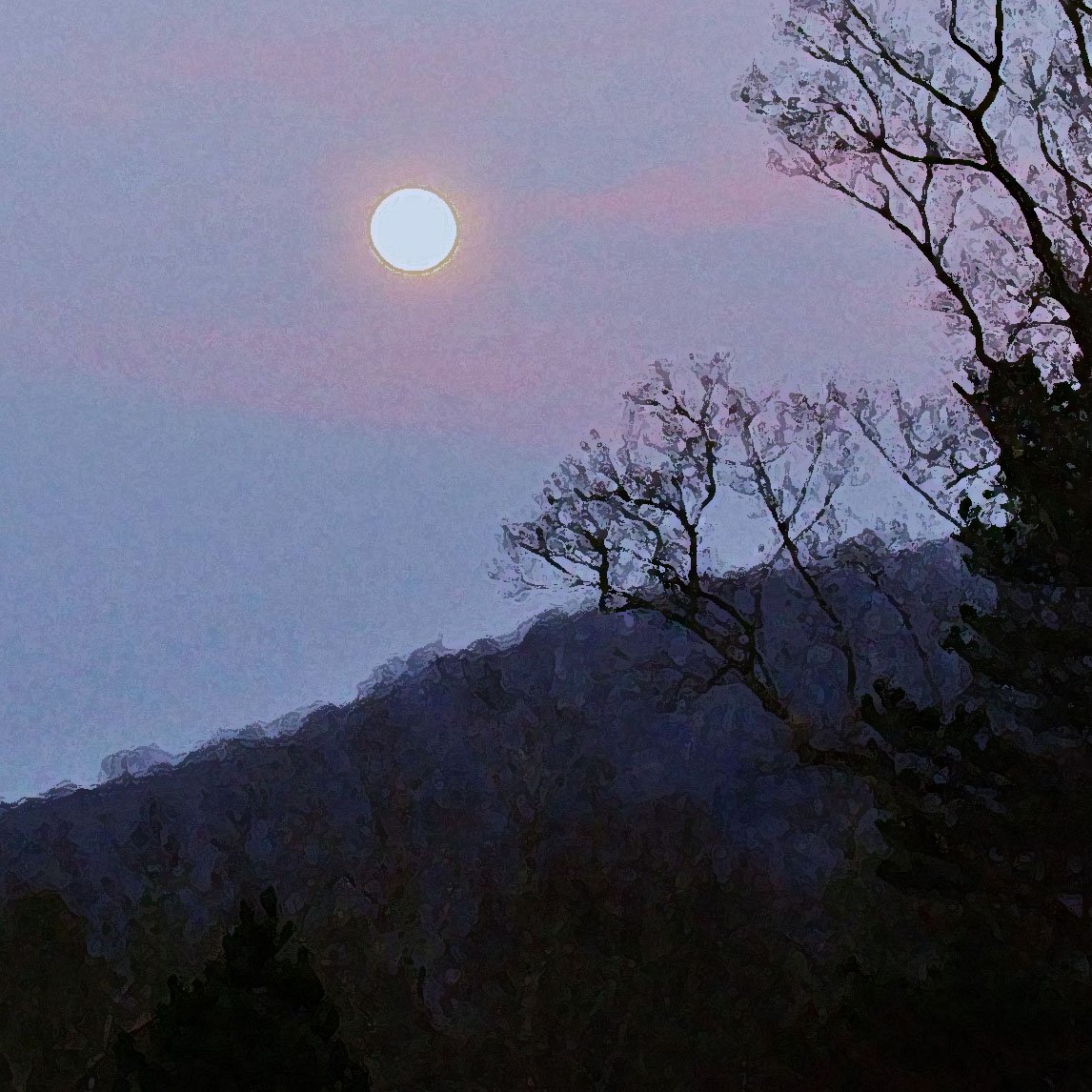Gardens are beautiful because there is beauty in life. There is more than that, though. It is the inescapable fact of existence as we know it, that where there is life there must inevitably be death. Life feeds on death, on all levels from the microscopic to the largest manifestations of creative energy.
Read MoreIt is impossible to know what the future might hold for young and undeveloped talent. When I was young and collected baseball cards, the card manufacturers treated rookie baseball players the same way for the same reason. "Rookie" cards combined two unknown young players on one card. Usually, neither of the players would amount to much.
Read MoreMy guess is that very few of the many people who have admired "Yoshimura Island" over the past three decades have taken note of the ingenious composition. In truth, I did not fully appreciate it myself until I learned more about bonsai than I knew at the time the planting was created. What Mr. Yoshimura had done with the arrangement of this planting and why he did it was something I discovered only after years of looking at it and thinking about it.
Read MoreEven today I can't think of a great many technical tips I can say for certain came to me from Mr. Yoshimura. He contributed a good deal of information in that regard, but it all gets blended in with things I learned elsewhere, before and after my time with him. The real gold of my Yoshimura experience was in all the stuff that perplexed me at the time.
Read MoreI had brought along three ceramic tray containers — low-profile, good quality Japanese stoneware ovals, the kind traditionally used for forest plantings. Mr. Yoshimura looked at those a moment, then said, "Come with me!" At this he became animated to a surprising degree, scurrying in short, rapid steps toward the greenhouse. I followed.
Read MoreWhen Mr. Yoshimura wasn't preparing me for the future, he was looking back over the decades of his own past, trying, I think, to discern why things went the way they did. He spoke of episodes from all different phases of his life, from the distant days of his youth up to the most recent years.
Read MoreMr. Yoshimura's teaching style was direct. He spoke declaratively and took pains to be exact in his statements. He expressed himself with authority that arose from an absolute command of his subject, acquired over an entire lifetime spent immersed in the art of miniature trees and landscapes.
Read MoreMr. Yoshimura loaded my slides into the projector's carousel then started projecting the images onto a small screen, also crammed into the room. Here my lessons began. As each tree's image was thrown up on the screen, Mr. Yoshimura would study it briefly and then begin a critique.
Read MoreIn January of 1995 I traveled to Briarcliff Manor, New York, for a three-day study session with Mr. Yuji Yoshimura. Shortly after my return, I wrote an account of the experience and submitted it to Arboretum administration to communicate the value of what I had learned. What follows is an unedited transcript of that report.
Read MoreIn writing about my experience with Mr. Yoshimura, I am looking back over a span of nearly thirty years— long enough ago that some significant changes have occurred in how we live everyday life. Perhaps greatest among them is the revolution wrought by advances in electronic communication.
Read MoreAs the new year began in 1959, thirty-seven-year-old Yuji Yoshimura began teaching bonsai classes at the Brooklyn Botanic Garden. He'd arrived in America laden with all the bonsai materials needed because they would not be otherwise available. This amounted to more than a ton of baggage, and the whole operation must have required prodigious planning and organization.
Read MoreThe time has come for me to talk about Yuji Yoshimura. His name has appeared repeatedly in this Journal, because his influence on me — and, through me, on the Arboretum's bonsai identity — has been profound. But I have not yet told the story of the experiences with him that set my bonsai thinking on such a fateful course.
Read MoreOnce Don designated the bougainvillea as being excess plant material — not worth the trouble — it became valuable to me. I was not trying to prove anything or setting out on a mission to save it, but once the bougainvillea was deemed unworthy that meant nothing I might do to it would mess it up. I could try to make a good bonsai out of the wild bougainvillea just for practice, and if it didn't work out the plant could still go to the compost pile.
Read MoreThose little trees earn their keep at this time of year by providing a leafy green bonsai presence in the Baker greenhouse from December until the middle of May. People appreciate seeing the tropical bonsai looking so vibrantly alive while the temperate world outside, wrapped up in the somber cloak of dormancy, settles into the relative dullness of cold winter.
Read MoreAlthough the growing season is now over for temperate plants in our part of the world, there is at this time a flurry of important work that must be done. The last two months of the year see a reordering of business all across the bonsai front.
Read MoreLet us take one last walk through the garden, down
The path we have strolled so many times before
In earlier days made golden by the alchemy of time.
Read MoreThe beech trees used in this planting were grown from seed at the Arboretum in 1993 as part of the landscape nursery operation. When California bonsai artist Ben Oki visited us in 1996 we gave him some of these very young trees and asked him to make a group arrangement of them.
Read MoreIt might be supposed by people who don't know the backstory that this specimen was given the poetic name The Ogre in reference to the gnarly features of the deadwood, which can be read as a monstrous creature with one small, beady eye glaring out. But really it was named for the person who collected, styled and donated the little tree to our collection: Nick Lenz, the original wild man of American bonsai.
Read MoreWho does not feel something stir within them when they look upon the sight of autumn color in the landscape? What accounts for the melancholy we often feel, contemplating the changing landscape under a gray and cloudy sky, with the smell of wood smoke and a quiet chill carried on the breeze? Why does the past sometimes feel so close in autumn?
Read MoreTo say the herbaceous plantings are accessories or accents or even filler can seem a little dismissive. They have their own merits and can be appreciated for what they are. If we think of bonsai as being a miniature, living expression of the human experience of nature, why should herbaceous plantings not be included? Are they bonsai? The answer to that question depends on whom you ask.
Read More


















